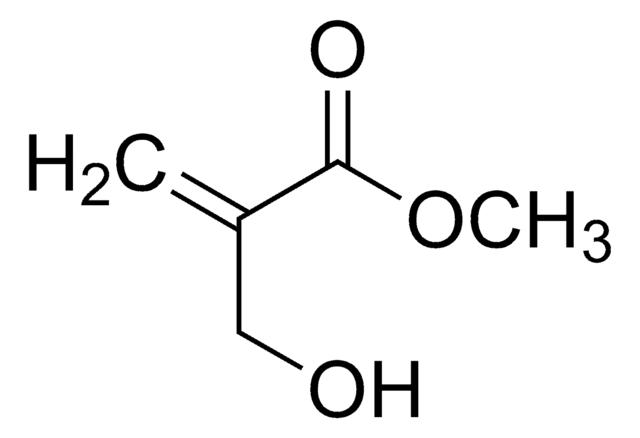292818
2-Hydroxyethyl acrylate
96%, contains 200-650 ppm monomethyl ether hydroquinone as inhibitor
Synonym(s):
Ethylene glycol monoacrylate
About This Item
Recommended Products
vapor density
>1 (vs air)
vapor pressure
<0.1 mmHg ( 20 °C)
Assay
96%
form
solid
contains
200-650 ppm monomethyl ether hydroquinone as inhibitor
refractive index
n20/D 1.45 (lit.)
bp
90-92 °C/12 mmHg (lit.)
density
1.011 g/mL at 25 °C (lit.)
storage temp.
2-8°C
SMILES string
OCCOC(=O)C=C
InChI
1S/C5H8O3/c1-2-5(7)8-4-3-6/h2,6H,1,3-4H2
InChI key
OMIGHNLMNHATMP-UHFFFAOYSA-N
Looking for similar products? Visit Product Comparison Guide
General description
Application
Signal Word
Danger
Hazard Statements
Precautionary Statements
Hazard Classifications
Acute Tox. 3 Dermal - Acute Tox. 4 Oral - Aquatic Acute 1 - Aquatic Chronic 3 - Eye Dam. 1 - Skin Corr. 1B - Skin Sens. 1
Storage Class Code
6.1A - Combustible acute toxic Cat. 1 and 2 / very toxic hazardous materials
WGK
WGK 3
Flash Point(F)
213.8 °F - closed cup
Flash Point(C)
101 °C - closed cup
Personal Protective Equipment
Certificates of Analysis (COA)
Search for Certificates of Analysis (COA) by entering the products Lot/Batch Number. Lot and Batch Numbers can be found on a product’s label following the words ‘Lot’ or ‘Batch’.
Already Own This Product?
Find documentation for the products that you have recently purchased in the Document Library.
Customers Also Viewed
Our team of scientists has experience in all areas of research including Life Science, Material Science, Chemical Synthesis, Chromatography, Analytical and many others.
Contact Technical Service

















